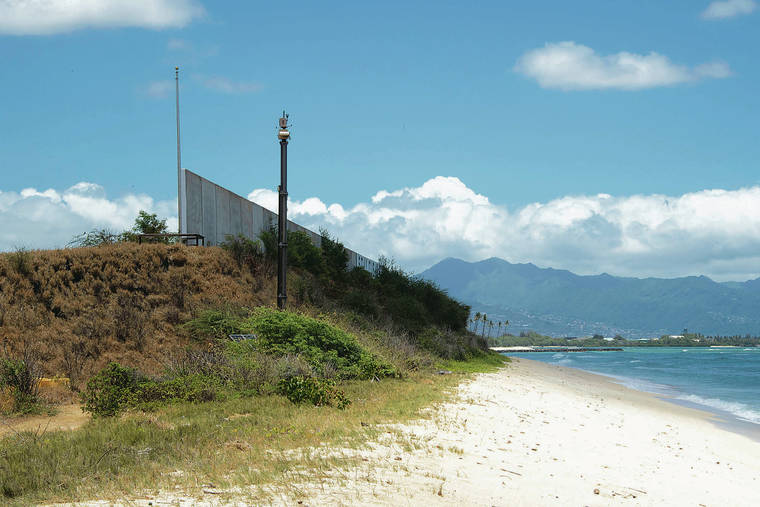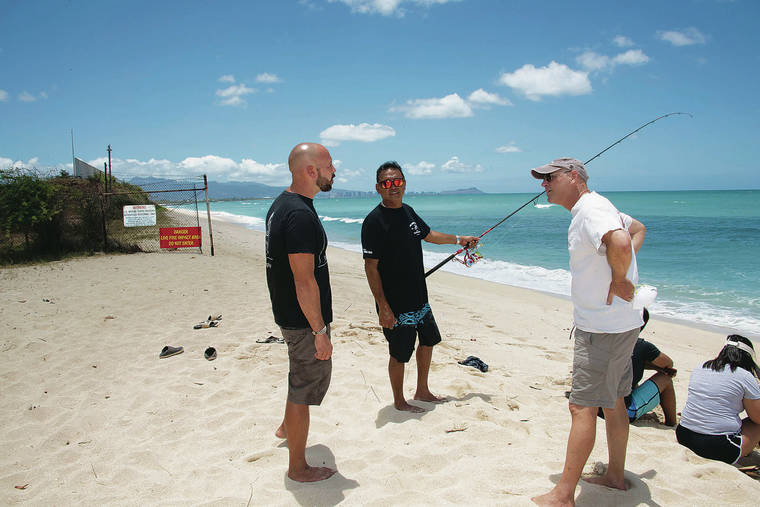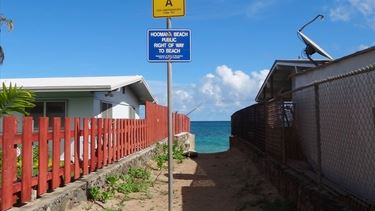
Protect Pu'uloa
Reduce Lead Contamination at Puʻuloa Beach
Puʻuloa Beach Park is a community beach located adjacent to the U.S. Marine Corps (USMC) Puʻuloa Range Training Facility (PRTF). For almost a century, PRTF has been used as a range for rifle and pistol practice. The coastal dunes of PRTF thus have high levels of lead from the bullets used in target practice. Chronic erosion of the shoreline in front of PRTF has raised concerns about lead pollution along the public shoreline. Due to these concerns, Surfrider Foundation Oʻahu Chapter (SFO) volunteers conducted a series of sediment testing in areas along the shoreline in front of PRTF in ʻEwa Beach. Lead contamination levels were determined to be as high as 17 times the accepted levels for industrial areas.

In October 2022, SFO sent a letter to Rear Admiral Jeffrey Kilian outlining the need to protect such a highly impacted area and the need for a Beach Contamination Assessment. SFO has three immediate goals within the campaign:
- Ensure the U.S. Navy clean up any lead-contaminated soil,
- Require the U.S. Navy to sample the soil and water at Puʻuloa Beach Park and nearby residential neighborhoods of ʻEwa Beach
- Require the U.S. Navy to sample the reef ecosystem seaward of PRTF for lead contamination.
The Oʻahu Chapter Oʻahu Chapter demands that the U.S. Navy reduces lead pollution along the public shoreline at Puʻuloa Beach Park
What's Next?
Long-term goals for the Protect Puʻuloa campaign include the U.S. Navy relocating all of the PRTF impact berms away from the sensitive coastal environment, conducting more frequent lead remediation of berms, and incorporating quantitative soil testing.
This campaign is being conducted in tandem with the Protect ʻEwa Beach Campaign that demands the military conduct an Environmental Impact Statement (EIS) for a proposed sea wall.

Protect ʻEwa Beach
Tell The Reader More
In 2019, the USMC proposed building a 1,500-foot steel shoreline barrier along the PRTF) at ʻEwa Beach and adjacent to Pu'uloa Beach Park. PRTF is a firing range used by the USMC for training purposes. The USMC maintains that the wall is needed to mitigate coastal erosion and protect the firing range. In March 2020, the US Marine Corps conducted an Environmental Assessment (EA) and determined that the project would not have significant environmental impacts. Surfrider Foundation Oahu Chapter, local government agencies, and community members, however, are concerned about the project's potential impacts on nearshore coral reefs, surf spots, and accelerating coastal erosion.
In a June 17, 2020 letter to the Secretary of the Navy, Surfrider Foundation Oʻahu cited numerous shortcomings in the Environmental Assessment. The Surfrider Foundation Oahu Chapter is calling on the Department of the U.S. Navy to conduct a more thorough Environmental Impact Statement (EIS) prepared by independent experts on the wall's environmental and human impacts. As part of this assessment, the Oʻahu Chapter requests that the U.S. Navy fully evaluate the long-term consequences of the wall and consider natural or nature-based alternatives.
